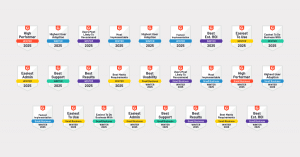That’s where PIM comes in.
PIM stands for Project Information Management; it is a critical process for architecture and engineering firms to manage and organise project data throughout its lifecycle. It involves the collection, organisation, storage, retrieval, and distribution of project-related information. This can include drawings, documents, emails, specifications, RFIs, and more.
As the building design and construction industry becomes increasingly digitised, online PIM software helps to easily organise information that could otherwise be hard to find or even lost. Effectively managing your project information is essential to ensure the success of your projects, especially when dealing with large volumes of data and complex, multi-staged construction projects. It also ensures that all stakeholders have access to the most up-to-date and accurate data.
Why is PIM software important for architecture, engineering, and consulting businesses?
There are several reasons why having a PIM solution is important. We’ve outlined some of the top reasons you should know about.
1. Efficient Information Management
Through better organisation, the automating of key processes, and the centralisation of data, PIM solutions can help firms streamline their operations, reducing the time and effort required to complete tasks and ensuring teams are working with the latest information so they can successfully deliver projects.
2. Enhanced Collaboration
PIM software can facilitate improved collaboration and communication between project team members, contractors, and other stakeholders, resulting in a common understanding and alignment on the direction of the project and the jobs to be done.
3. Risk Mitigation
PIM systems can help reduce the risk of errors and delays by ensuring that all stakeholders have access to accurate and up-to-date information. When properly managed, PIM reduces the risk of data loss, mistakes, miscommunications, and disputes that can cause delays, rework, and additional costs.
4. Regulatory Compliance
By using a PIM solution to maintain a complete and accurate record of project information, businesses can demonstrate compliance with relevant regulations, standards, and requirements such as document retention policies that facilitate audits and reviews.
5. Improved Decision Making
Access to the latest project information through a PIM solution enables project team members and stakeholders to make informed decisions to ensure project work is carried out to the correct specifications, issues can be easily identified and proactively dealt with, and profitability is maintained.
Investing in a PIM software solution is a wise decision for architecture, engineering, and building design and consulting firms looking to achieve success in their projects. Through the centralisation and easy access of project information, businesses can expect to experience greater efficiencies, significant time savings, the reduction and mitigation of risks, and greater alignment with all stakeholders throughout the lifecycle of the project.


